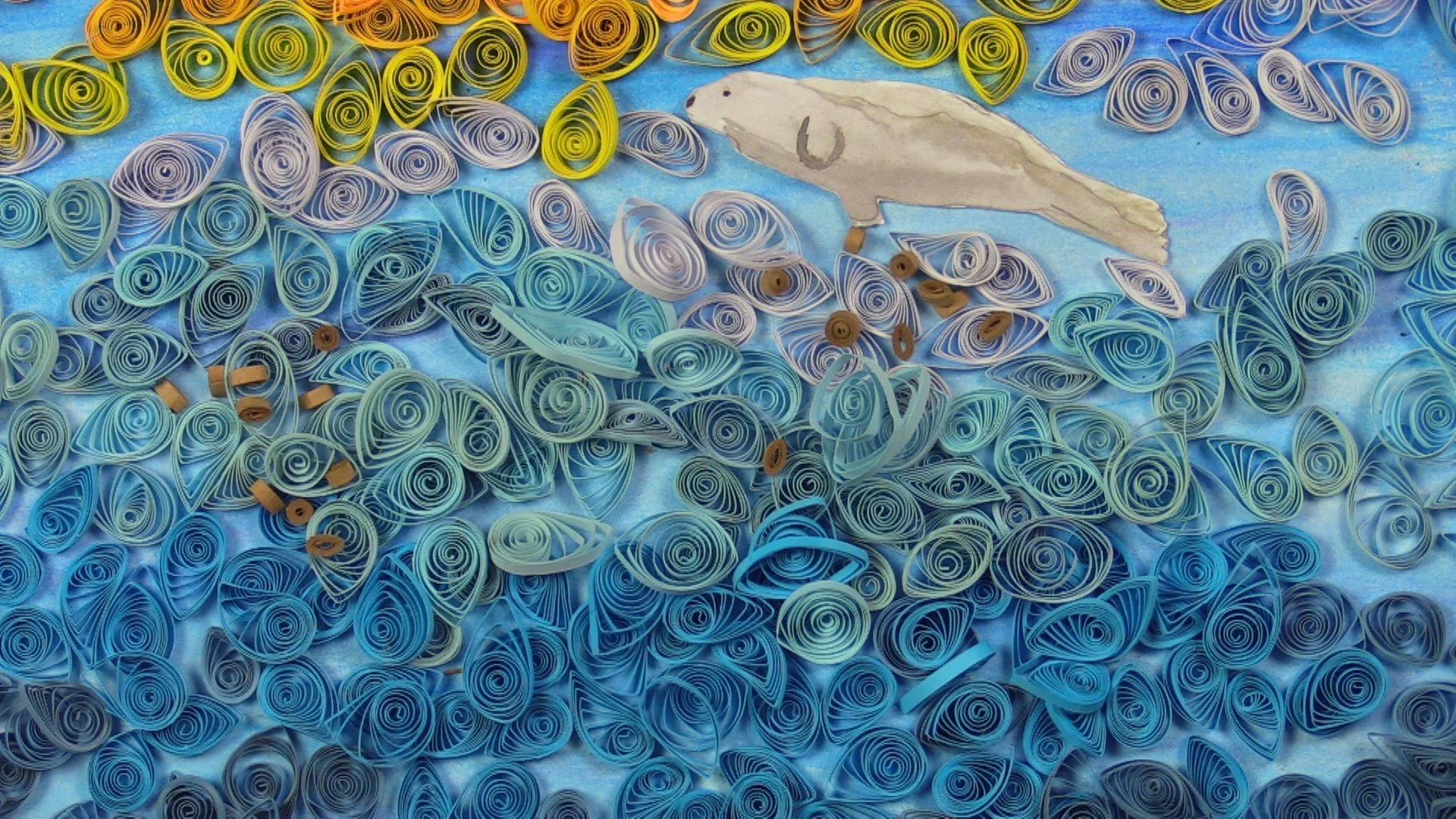
What Roles do Seals Play in the Ecosystem?
Seals are predators and prey, and they contribute to the marine ecosystem in surprising ways…
Humans and marine mammals have shared coastal shores and waters for millennia.
Elizabeth Bradfield
We know from oral histories of Native people and from archaeological work that gray and harbor seals have been on this coast for millenia and have been intertwined with human lives for all that time. Seal bones and teeth are found in midden sites of Indigenous communities dating back at least 4,000 years.
Seal species can be identified by their bones, particularly their teeth, which are quite distinctive, species by species. The photo on left shows a harbor seal jaw (here’s a page with scientific details). Gray seal teeth are not as “cusped” — that is, they don’t have as many or as detailed points to their teeth (see this page for images of gray seal jaws).
Seeing seal bones in middens might mean many things…. seals may have been used only for the oil their fat provided, the leather and fur their skins provided. They may also have been a source of food, as they are for many Northern Native communities still today. For gray and harbor seals in New England, those older stories are still sleeping, but some contemporary people believe that seal was a part of the ceremonial meal shared between Wampanoag and Pilgrim people on what is called “Thanksgiving” (read more).
Seals in the ocean are mesopredators (middle predators), meaning that they eat and are eaten.
White sharks are an “apex predator,” and, once a shark is large enough (generally about 12 feet long), they undergo an amazing change: their teeth and jaws shift so that they are able to move from a diet of fish to one that includes marine mammals, like seals.
While white sharks do eat seals when they are adults, they also eat fish, and are important scavengers of whale carcasses and more.
Researchers at the Atlantic White Shark Conservancy, Massachusetts Department of Marine Fisheries, the Center for Coastal Studies and others are studying the details of the seal/shark relationship.
Seals interact with the environment in surprising ways
Tomas Koek
Tomas Koek
Sarah Medill © Parks Canada
On Sable Island, Canada, the largest breeding colony for gray seals, scientists have found that the nutrients seals provide while on shore help grasses thrive. These grasses are a source of food for wild horses.
Watch and Learn
Learn about Poo-Trients in this “Fertilizing the Ocean” video.
Seals are part of the nutrient cycle both through what they eat and what they leave behind.
Seals feed other beings, too. When their bodies wash up on shore, scavengers such as gulls, turkey vultures, and coyotes will feed on the carcass, as well as innumerable insects and invertebrates.
Left: a semipalmated plover plucks invertebrates from a bit of seal fur and skin.
Right: a coyote feeds on a seal carcass.
References/Dive Deeper
“The genetics of recolonization: an analysis of the stock structure of grey seals (Halichoerus grypus) in the northwest Atlantic,” Wood, S.A., T. Frasier, B. McLeod, B. White, W.D. Bowen, M. Hammill, G. Waring, J. Gilbert and S. Brault. (2011)
“Poo pump: whales as ecosystem engineers” Joe Roman (2014)
Roman, J., & McCarthy, J. J. (2010). The whale pump: marine mammals enhance primary productivity in a coastal basin. PloS one, 5(10), e13255.
Freedman, B., Catling, P. M., & Lucas, Z. (2011). Effects of feral horses on vegetation of Sable Island, Nova Scotia. The Canadian Field-Naturalist, 125(3), 200-212.
Schmitz, Oswald J., Dror Hawlena, and Geoffrey C. Trussell. Predator control of ecosystem nutrient dynamics. Ecology letters 13, no. 10 (2010): 1199-1209.






